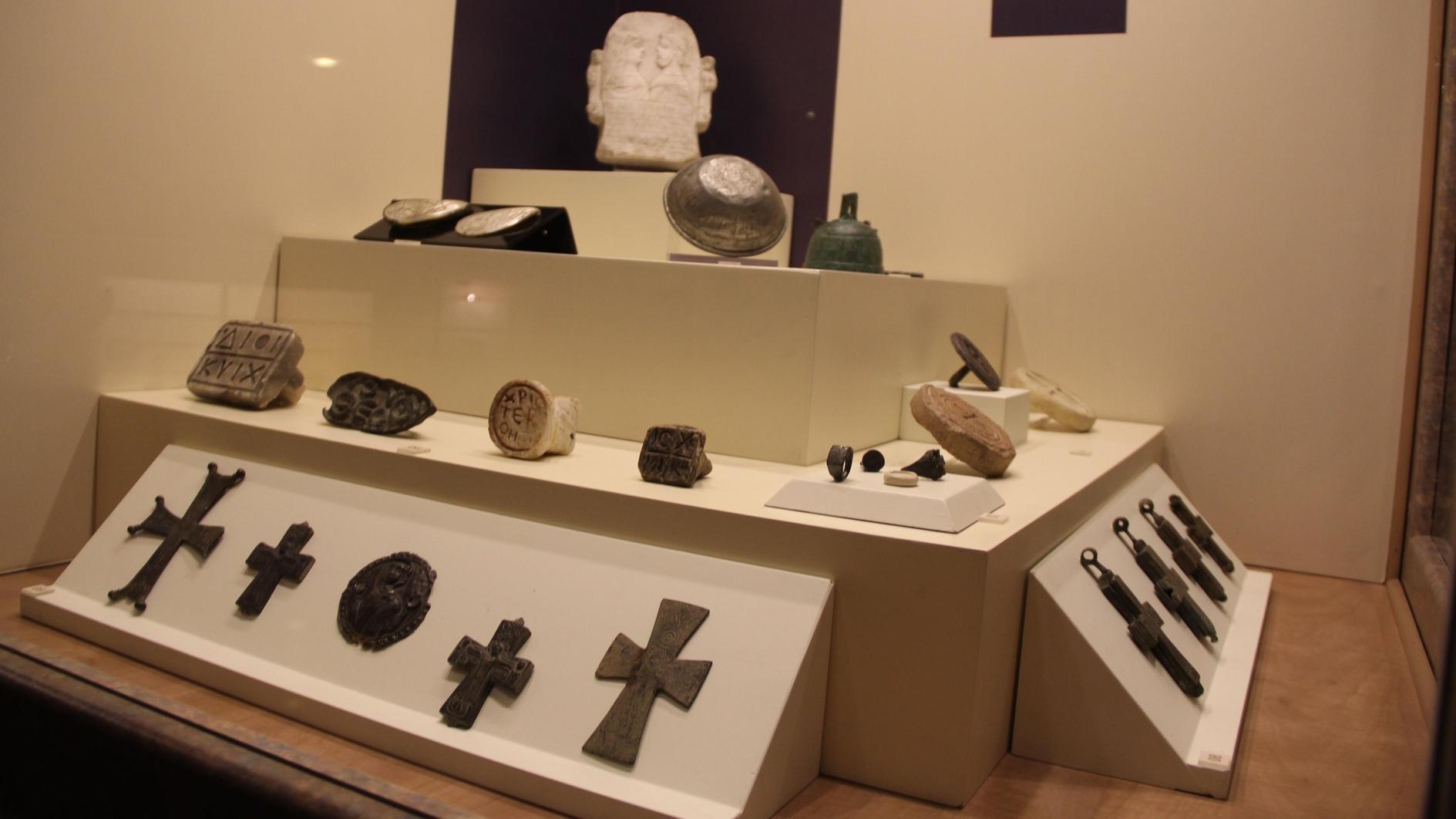
Çorum Museum, home to artifacts from eight civilizations, welcomes history enthusiasts. The 110-year-old museum, built as a hospital in 1914, is among outstanding architectural structures in the country.
Çorum Museum in Central Anatolia takes its visitors on an unforgettable historical journey with its 15,000 artifacts. Located in the province of Çorum and built as a hospital in 1914, the 110-year-old museum building later served as a school and is among the noteworthy architectural works in Türkiye, coined the "Topkapı Palace of Anatolia.”
The historical building, which was once flocked by people seeking cures for their diseases and then hosted students, was converted into a museum in 2003. As Çorum has an important place in the field of archaeology in Türkiye, historical artifacts found in the city’s excavation areas such as Hattusa Şapinuva, Alacahöyük, Eskiyapar and Resuloğlu are exhibited in the museum.
In addition to being Türkiye’s first boarding museum, Çorum Museum, which is registered as an immovable cultural asset that needs to be protected, had its showcases renewed before the opening of the new tourism season. New arrangements were made in the museum and some artworks were put on display for the first time.
The glass cases on the fourth floor of the museum, where gold artifacts from the Classical, Hellenistic, Roman and Eastern Roman periods are on display, were changed within the framework of the renovation works.
Most of the 115 works in the museum warehouse, consisting of jewelry and ornaments made of gold and semi-precious stones, were brought to the country through confiscation, purchase and rescue excavations.
Among the rare artifacts in the museum is a 3,600-year-old bronze Hittite seal, which was used in the correspondence between the king and the clerk during the Hittite period and seized by the police in a cream box as it was attempted to be smuggled abroad. There is also a unique Hittite bracelet, made of precious metals such as bronze, nickel, silver and gold. The bracelet was found by a farmer in a field, and it provides an important example of the Hittite art of jewelry.
A 3,300-year-old bronze warrior helmet found during archaeological excavations at the Şapinuva ruins in Ortaköy district is priceless. The warrior helmet, which was introduced to the scientific world by the late Mustafa Süel after its discovery in 2002, is unique in the world.
The helmet is crushed and destroyed, and very few of which have survived to the present day as bronze war materials were taken as spoils of war and the bronze was re-melted and used in other productions. It is invaluable, as it is the sole example that has survived from the Hittite Empire period. The helmet, which was presented as a gift to the Storm God in mythology, started to be exhibited in the museum.
Another rare artifact in the Çorum Museum is a gold medallion with the figure of Jesus Christ engraved in Najaf stone. It was found during an illegal excavation by treasure hunters. The medallion, which was seized by the gendarmerie teams in a successful operation while it was about to be smuggled abroad, was determined to be approximately 1,500 years old. The gold medallion, which is exhibited in a special display case in the museum, also attracts the attention of visitors.
Historical museum building
Çorum Museum offers its visitors a different experience not only with its artifacts but also with its building. The museum building, registered as an immovable cultural asset that needs to be protected, follows a chronological order dating back to the Chalcolithic Age.
Stating that Çorum Museum began serving as a hospital in 1914, director Metin Çakar explained that the building reopened as a museum in 2003.
“Many artifacts, especially from the ancient period, the Hatti period and the Hittite period, found in five different archaeological excavations carried out in Çorum, are waiting for visitors in the Çorum Museum. We made new arrangements in 10 of our showcases in the 2023-2024 season. We added the new works to the showcases,” he said.